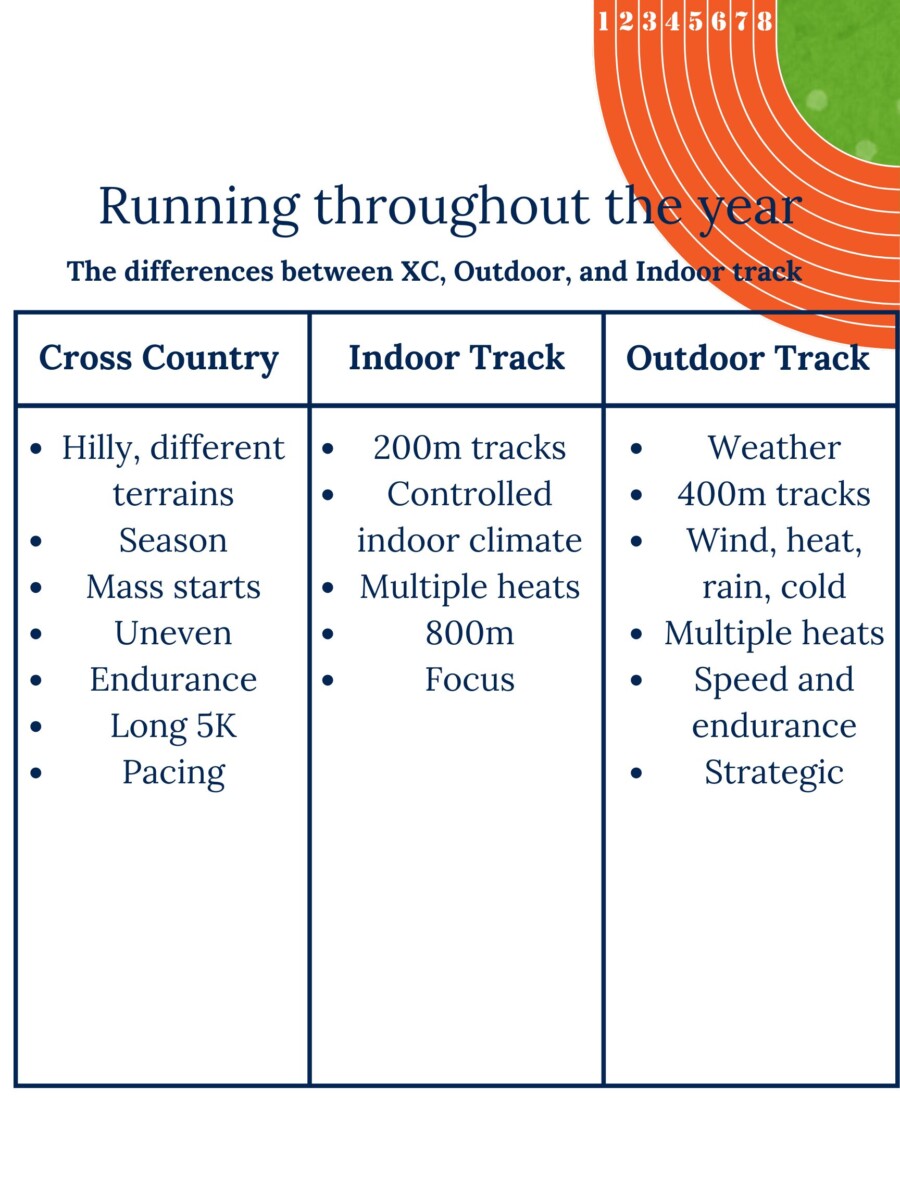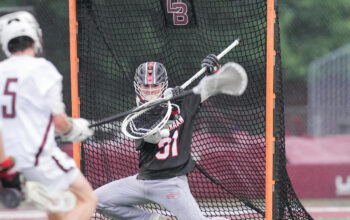Lucy Paine, Sports Editor
@lpainecourant
To most, cross country, indoor and outdoor track are just considered “running,” but the three seasons are drastically different. For student athletes at the New Canaan High School, each running season presents a unique set of challenges and opportunities. Whether it’s cross country, indoor track, or outdoor track, the transition between these sports requires significant adjustments in strategy, preparation, and mindset.
The physical environment plays a crucial role in shaping race strategy and preparation. Senior Girls Cross Country Captain, Charlotte Moor, highlighted the significance of terrain in the cross country season. “The cross country courses are really hilly, our state’s course at Wickham Park for example. Because of this, leading up to those races I try to focus on hill workouts to prepare my fitness and mental toughness,” said Charlotte.
Seasonal changes significantly impact training routines as well. Boyd Cousley, another runner, described how cross country training involves “hill loops” to simulate race conditions. “The state course is known for being particularly hilly, so incorporating hill workouts like hill loops are essential to get ready for the competition,” said Boyd.
In contrast, indoor and outdoor track races occur on flat tracks, eliminating the challenge of hills but requiring athletes to adjust to different surfaces between seasons. Junior Delia Bakal, who competes in all three seasons, noted the variability of indoor track conditions, “Some tracks are made of gym floor material, which is very different from high-quality outdoor tracks. We have to practice our starts and finishes to adapt to these changes,” said Delia.
The same differences apply to the boys cross country team as well, “In cross country, you need to decide whether to use more energy on the first mile with hills or save it for later,” said Senior Boys Cross Country captain Faizal Zakir-Hussian.
Indoor track then shifts the focus to speed. “The races are shorter, so I try to balance endurance with speed workouts during the off-season,” said Charlotte. Outdoor track, with longer straightaways, provides athletes the space to achieve faster times and during training they often transition to a mix of speed and endurance work.
Each season brings its own physical and mental demands. For cross country runners, the hills and uneven terrain test physical stamina and mental resilience. “In the last mile of a 5K, it’s less about your legs and more about your mind telling you to stop,” said Charlotte.
Indoor and outdoor track races, especially shorter ones like the 800-meter, push athletes to maintain anaerobic strength. “The 800 is an all-out sprint for two laps, you can’t go out too fast or you’ll lose stamina,” said Faizal.
Mentally staying engaged is a common theme as well. “It’s hard to remain mentally aware for the entire race, especially during the finishing stretch, where every second counts,” said Delia.
Despite the challenges, athletes find joy in each sport’s distinctiveness. Cross country’s scenic courses and camaraderie stand out to many athletes. “There’s a famous hill called the Green Monster,” said Charlotte. “It’s a big accomplishment to conquer it.”
Indoor track’s fast paced atmosphere, especially at iconic venues like The Armory in New York City, excites many runners too. “The track feels extra bouncy there, it’s really cool,” said Charlotte.
While each season has its perks, runners at NCHS agree that the friendships built through shared experiences ties them together. “In cross country, everyone does the same race, which creates a special bond. In track, it’s different because people are spread across various events, but the support is still there,” said Delia.
Overall, each sport demands its own skill and mindset, fostering growth in distinct ways. “The three seasons are very different, although it may not seem like it from a non-runner’s perspective,” said Boyd.




